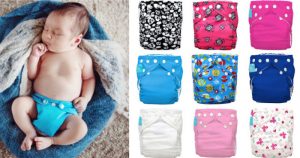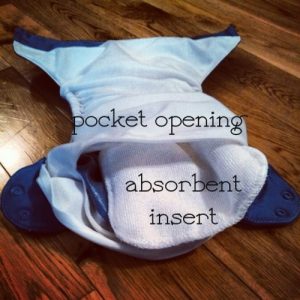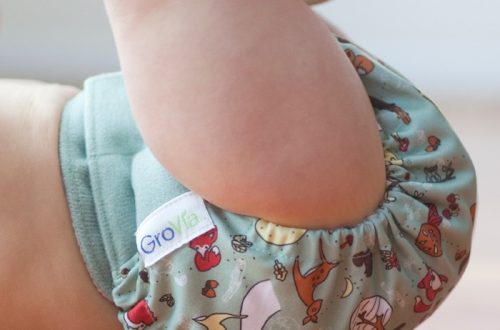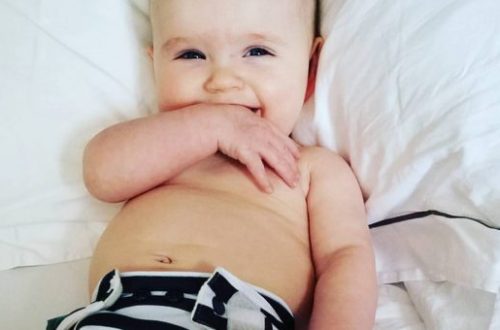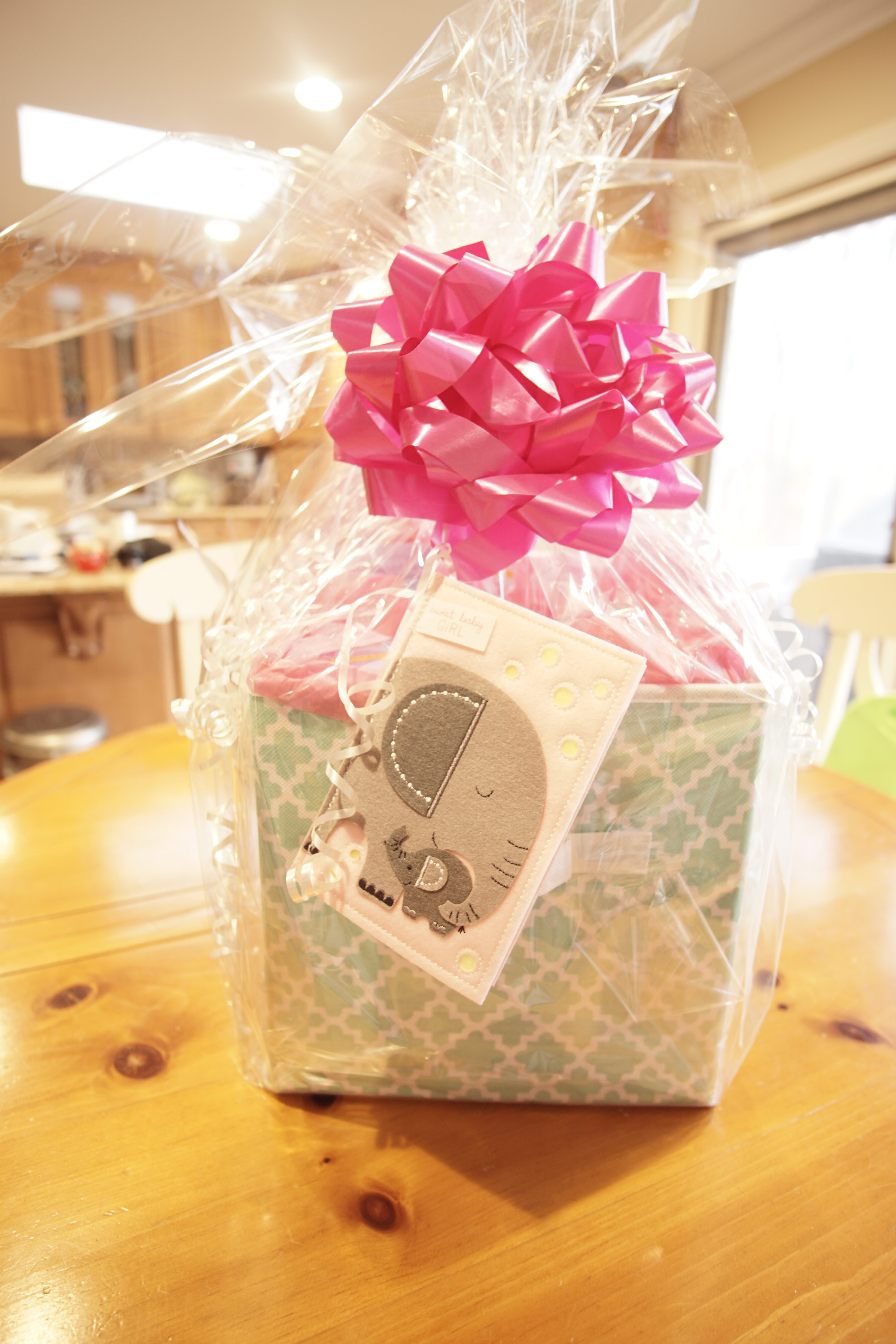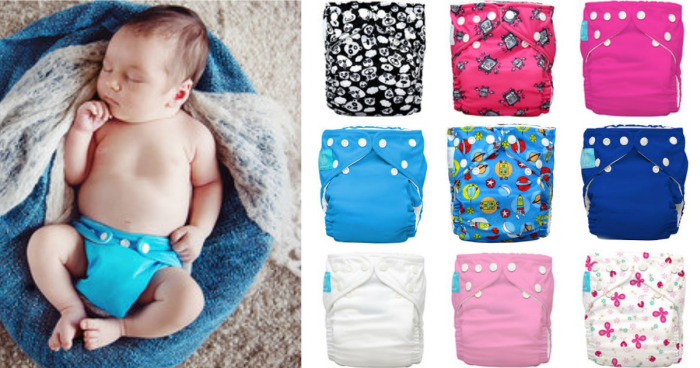
Cloth Diaper Buyers Guide – Pockets
If you go to a mainstream baby store today (Buy Buy Baby, Babys R Us) and you roll up to the cloth diaper isle, you will most likely find mainly pocket diapers. Many of the big name brands carried by big box stores – Charlie Banana, Rumperooz, BumGenius – carry pocket diapers so extensively that its would be easy to believe they’re the only option out there, or at least the most popular. Indeed, most major manufacturers have a pocket diaper in their line up, even if they’re not their “signature” diaper.
So what is a pocket?

Simply put, a pocket is a waterproof, PUL exterior with an inner microfiber liner. There is a space or pocket between the two sides where inserts are put to absorb urine. Usually a microfiber insert comes with a pocket diaper, though you can buy other types of inserts (such as cotton, hemp, or bamboo).
While nearly every major retailer has a pocket option, the most popular brands you will probably find at big box stores are BumGenius, FuzziBuns, Charlie Banana, and Rumperoos.
The good.
Easy – One main reason I think pockets are so popular is that they are more or less a self-contained option and bear some resemblance to regular diapers. Once they’re stuffed, they’re pretty straight forward to the non-cloth diaperer. If you’re going out for the afternoon and grandma or a babysitter is taking care of baby, you can explain them quickly and easily. Care takers simply put the dirty in the pail and put a clean diaper on. No folding or weird things to confuse. While not as slim as modern disposables, they’re bulk reminds me of the disposables my cousin had as a baby 25 years ago. Like disposables, pockets are fastened by attaching the back to the front so it won’t seem too foreign to a baby sitter. Snaps can be marked with a permanent market so caretakers know which to use (and then be wiped off later using a little elbow grease).
Absorbency – One of the great benefits of pockets is the ability to customize your absorbency. Younger babies can enjoy a slimmer fit for their smaller bodies by only using a single insert of microfiber, cotton, hemp, or blends. Older babies that pee in high volumes can have two (or three) inserts. My daughter is a tummy sleeper so I double stuff: one regular microfiber and one cotton/hemp insert folded in half and placed in the front. Some people love pockets for overnight because they can load up on inserts for heavy wetters. The options are endless.
Swim diapers – We have a few real swim diapers, but in the summer when we’re at the pool every day, pockets can double as a swim diaper. Without the inserts, the diaper will hold in any poop while the fleece interior will keep baby comfortable.
Cover in a pinch – In a pinch, a pocket can be used as a cover, until the fleece lining gets soiled. Charlie Banana, for one, sells a disposable insert to use inside their diapers. Instead of stuffing them, lay them on top of the fleece, against baby’s skin. (Truth be told, we only didn’t this once on a day trip to NYC. It didn’t work out well. I felt the fleece kept getting wet. However, because of the local I was changing closer to every 2.5 to 3 hours, longer than I normally would.)
The bad.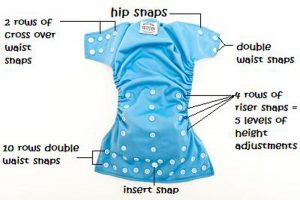
Snaps – Some users can find the snaps overwhelming. Because several diaper companies customize their snaps, they are not always the same from one diaper to the next. Most pockets will have a double row of waste and hip snaps (newborn size pockets usually only have a single row). Most will also have three (sometimes four) rows of rise snaps. Those are snapped when you first start using the diaper to the height appropriate to baby’s length. Only as baby rows and needs a higher rise do you need to worry about unsnapping and resnapping them. For example, my daughter went from the third row to second around 10 months (approximately 20 inches and 29 pounds). At press time, she’s about 33 inches and 25 pounds and just on the verge of going up to the next rise. A few brands (Charlie Banana and FuzziBuns) use elastics instead of rise snaps. While it keep the diaper a bit smoother, my personal opinion is that they’re a pain in the butt.
Material – Because pockets have an inner layer that stays next to baby that needs to stay dry, options are somewhat limited. Most pockets will use fleece, a few (like Bumpkins) use a heavy velvet-like product that I’m not a fan of. If your concerned about synthetic fibers touching your baby, pockets are not the way to go.
The ugly.

Stuffing – To clean the inserts, they have to be taken out for every wash and then restuffed. I find this tedious and boring. What’s more, my husbands large hands have a hard time stuffing so I the official stuffer (what an honor). Some people get around this by simply sorting everything and stuffing as needed for each diaper change. Whatever, I still hate it.
Microfiber – 98% of pocket diapers will come with microfiber inserts, because they’re the cheapest. While microfiber does absorb the quickest of all the insert materials, it’s also the bulkiest. Many cloth diaperers will find themselves eventually buying other types of inserts to get the right absorbency. Microfiber also can’t touch baby’s skin (it will absorb moisture quickly from skin and leave baby with a rash), so if you have several types of diapers you’ll need to separate all the different types of inserts and make sure all caretakers know what can be used in what.
How much does it cost? Does it really save me money?
Pocket diapers can easily be used for overnight diaper by doubling (or tripling) your inserts. Cotton and hemp inserts are thinner than microfiber, so baby can easily sleep with three layers. Cloth diapers need to be changed on a 2 hour schedule: assuming babies are awake 12 hours, that’s 6 diaper changes a day, but I’m going to account for 8 for those non-schedule poos and overnights.
High End: $1129 including night diapering (for Charlie Bananas, $120.99 for 6, Amazon affiliate link).An informal poll of my friends revealed they spent about $40 a month on diapers. Therefore, pockets will pay for themselves in a little over 28 months (many babies will be potty trained by then). However, check out the bottom of this page for how this could still save you money.
Budget Conscious: $367.50 total or $53.50 a day. Therefore, my go-to “china cheepie” Alva Baby’s ($45 for 6, Amazon affiliate link) will pay for themselves in about 9 months.
To see what other costs you’ll incur getting up and running with cloth diapering, click here.
Other considerations: Both of these options come with a standard microfiber insert. At some point, you may need more than one insert per diaper and may want to combine different fibers. Keep the microfiber on top because it absorb the quickest and put anything under. You options include super but slow absorbing hemp (Thirsties Hemp Inserts, $9.75 for two pack, Amazon Affiliate link), cotton which absorbs less than hemp but faster (Thirsties Cotton Doubler, $8, Amazon Affiliate Link) or a combination of the two (Best Bottoms Hemp/Organic Cotton, $23,85 for three, Amazon Affiliate link).
The bottom line
Pockets are versatile but can be expensive. Although they are wide spread, make sure you do your research before buying. 